Price reductions at Crocus
by Sarah - February 3rd, 2010.Filed under: Crocus, Price Reductions.
Crocus reduced the price on these products today
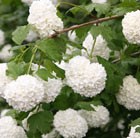
snowball tree (syn. Sterile) was £39.99 now £29.99
Position: full sun or partial shadeSoil: moderately fertile, moist, well-drained soilRate of growth: fast-growingFlowering period: May and JuneFlower colour: white or green-tinted white flowersHardiness: fully hardyIn May and June the branches of this vigorous deciduous shrub are smothered with large, snowball-like clusters of white or green-tinted white flowers – hence its common name. With maple-like, fresh green leaves that become purple-tinted in autumn it’s an excellent ornamental plant for a sunny shrub or mixed border with fertile, moist, well-drained soil.Garden care: After flowering prune established specimens, removing up to one in five of the oldest and weakest branches to the base. Apply a generous 5-7cm (2-3in) mulch of well-rotted garden compost or manure around the base of the plant.
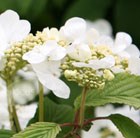
Japanese snowball bush was £44.99 now £39.99
Position: full sun or partial shadeSoil: moderately fertile, moist, well-drained soilRate of growth: averageFlowering period: MayFlower colour: whiteHardiness: fully hardyWonderful, white, lacecap-like flowers on horizontally tiered branches in May and toothed, deeply veined, dark-green leaves, turning red-purple in autumn. This beautiful, deciduous shrub makes an excellent specimen plant for a sunny shrub or mixed border. Hardy and easy-to-grow, its distinctive, horizontal habit works particularly well in a Japanese-style garden.Garden care: Keep the pruning of young plants to a minimum. Any vertical shoots that threaten to spoil the distinctive tiered shape of established plants should be cut back to their point of origin in summer after flowering.
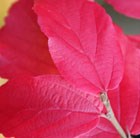
Persian ironwood was £59.99 now £49.99
Position: full sun or partial shadeSoil: moist, well-drained soil, preferably acidicRate of growth: fast-growingFlowering period: January to FebruaryHardiness: fully hardyIn autumn, this deciduous tree is a breathtaking sight, as its large, smooth, wavy-edged leaves turn brilliant yellow, then orange and finally blaze fiery red before falling. In late winter and early spring, insignificant, spidery, red flowers appear before the leaves. Persion ironwood is a spreading tree, with a short trunk and peeling grey and fawn bark. As it normally has multiple stems, it is best grown as a large shrub in the border or in an open woodland garden. It can get very big, so it is best suited to larger gardens.Garden care: Requires minimal pruning. Remove any broken, diseased or crossing branches in late autumn or winter. When planting incorporate lots of well-rotted garden compost in the planting hole and stake firmly.
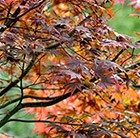
Japanese maple was £59.99 now £49.99
Position: full sun (but not south-facing)Soil: fertile, moist, well-drained neutral to acid soilRate of growth:slow-growingFlowering period: April to MayHardiness: fully hardyAn elegant small tree, with deeply lobed dark purple-red leaves that turn fiery red in autumn, and tiny purple flowers in spring. This neat, slow-growing acer has an open habit, and looks dramatic silhouetted next to buildings, as a focal point in a small courtyard, or in a Japanese-style garden. It needs a sheltered spot, away from strong winds or all-day sunshine. It also looks good in a container.Garden care: Add a top-dressing of a well-balanced fertiliser around the base of a recently planted tree in late spring and keep it well watered. No routine pruning is required, just remove any dead, damaged or crossing branches in late autumn or winter when they are fully dormant.
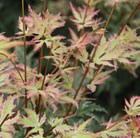
Japanese maple was £59.99 now £49.99
Position: partial shadeSoil: fertile, moist, well-drained neutral to acid soilRate of growth: slow-growingFlowering period: April to MayFlower colour: purple-redOther features: red winged fruit in late summerHardiness: fully hardyMasses of tiny, red, spring flowers contrasting beautifully against delicate grey-green leaves with slender white and shrimp-pink margins. This compact, upright Japanese maple is an ideal specimen tree for a small garden. It is best grown in partial shade since the exquisite, variegated foliage scorches in full sun.Garden care: Add a top dressing of a multi-purpose fertiliser around the base of the plant in late spring. No routine pruning is required, just remove any dead, damaged or crossing branches in late autumn or winter when they are fully dormant.
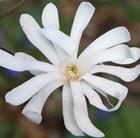
star magnolia was £54.99 now £49.99
Position: full sun or partial shadeSoil: any moist, well-drained soilRate of growth: slow-growingFlowering period: March to AprilHardiness: fully hardyA popular, compact, bushy shrub or small tree with mid-green leaves and silky buds which open up to large, pure white, star-shaped flowers, sometimes faintly flushed pink. The flowers are lightly scented, and open very early, before the leaves, eventually covering the shrub for several weeks. This is one of the best magnolias for a small garden.Garden care: Plant in a sheltered spot, away from strong winds. Requires minimal pruning. Remove any broken, diseased or crossing branches in midsummer. The best time to plant is in April, adding plenty of peat to the planting hole, in a sheltered spot. Mulch in spring with manure and leaf mould, especially on dry soils.
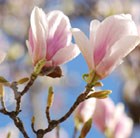
magnolia was £54.99 now £49.99
Position: full sun or partial shadeSoil: moist, well-drained, acidic soilRate of growth: averageFlowering period: April to MayHardiness: fully hardyOne of the most popular magnolias, with large, dark green leaves that start to appear in mid spring, at about the same time as the huge, deep rose-pink or white, goblet-shaped flowers. This is a good magnolia for smaller gardens,as it remains a shapely shrub for many years, and even when it is mature, is a manageable small tree.Garden care: Requires minimal pruning. Remove any broken, diseased or crossing branches in midsummer. The best time to plant is in April, adding plenty of peat to the planting hole, in a sheltered spot. Mulch in spring with manure and leafmould, especially on dry soils.






